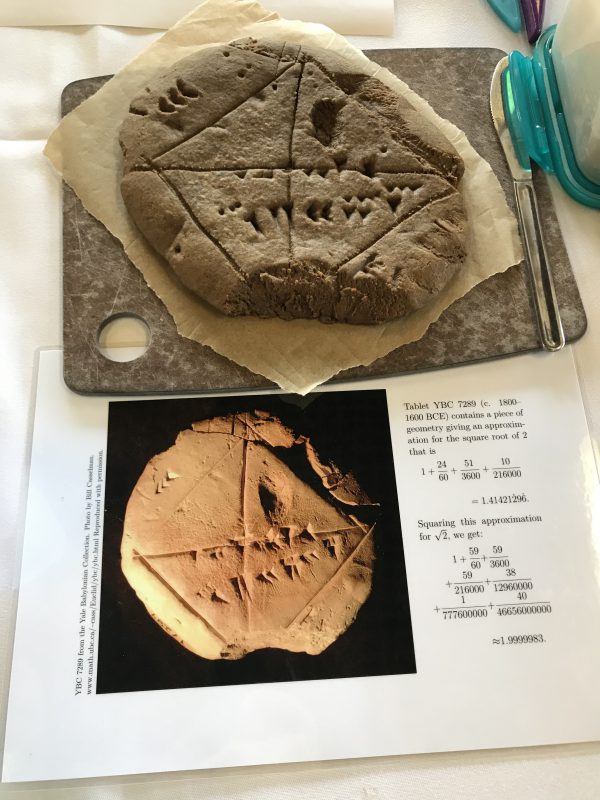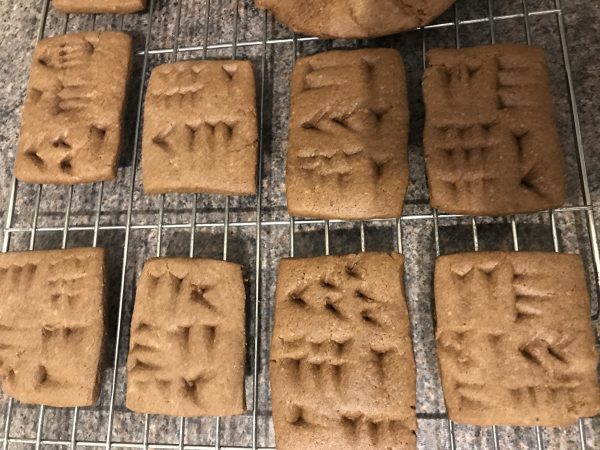The MathsJam conference has a baking competition. My friend the archaeologist Stephen O’Brien tweeted a while ago a link to a fun blog post ‘Edible Archaeology: Gingerbread Cuneiform Tablets‘. Babylonian tablets are among the earliest written evidence of mathematics that we have, and were produced by pressing a stylus into wet clay.
So it was that I realised I could enter some Babylonian-style tablets made from gingerbread.
I made a gingerbread reconstruction of a particular tablet, YBC 7289, which Bill Casselman calls “one of the very oldest mathematical diagrams extant“. Bill writes about the notation on the tablet and explains how it shows an approximation for the square root of two. I’m sure I didn’t copy the notation well, because I am just copying marks rather than understanding what I’m writing. I also tried to copy the lines and damage to the tablet. Anyway, here is my effort:
In addition, I used the rest of the dough to make some cuneiform biscuits. I tried to copy characters from Plimpton 322, a Babylonian tablet thought to contain a list of Pythagorean triples. Again, Bill Casselman has some interesting information on Plimpton 322.
Below, I try to give a description of my method.

